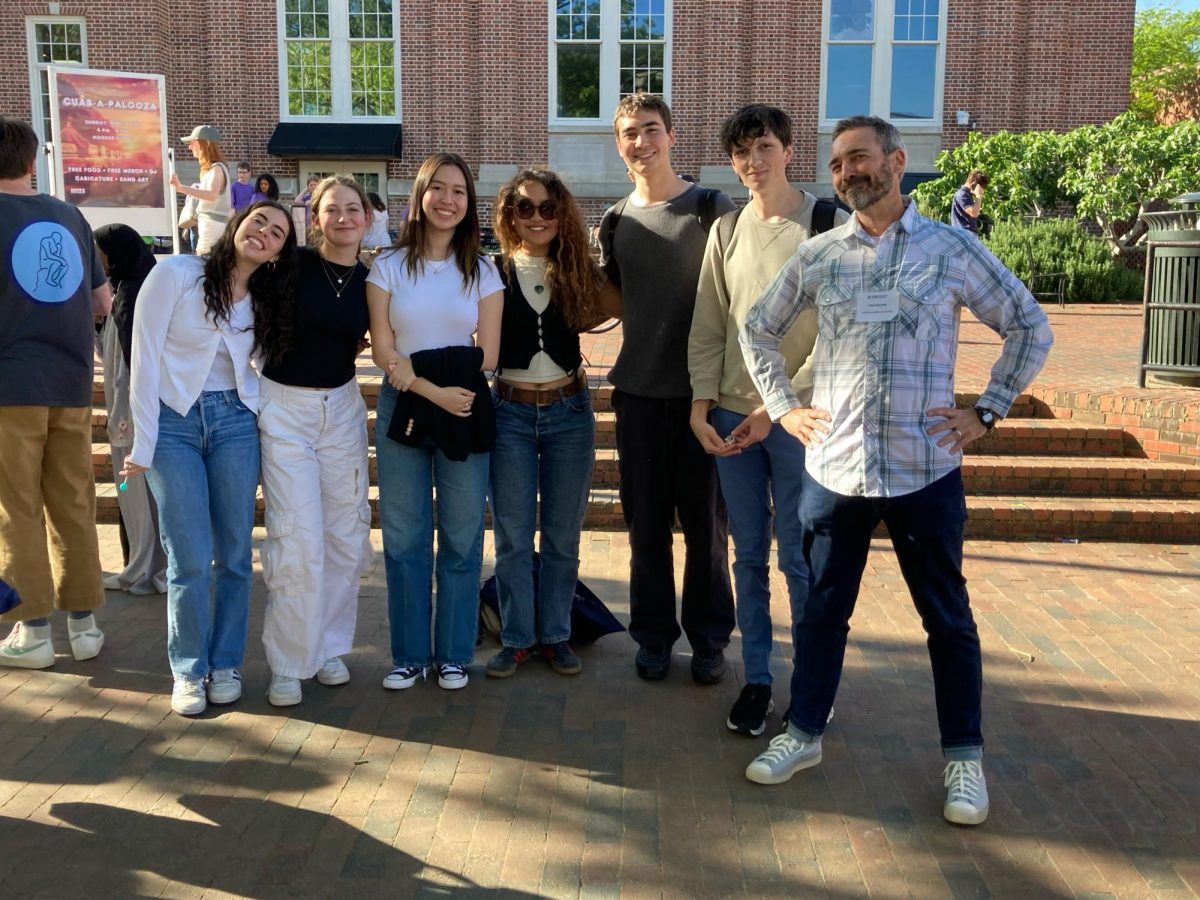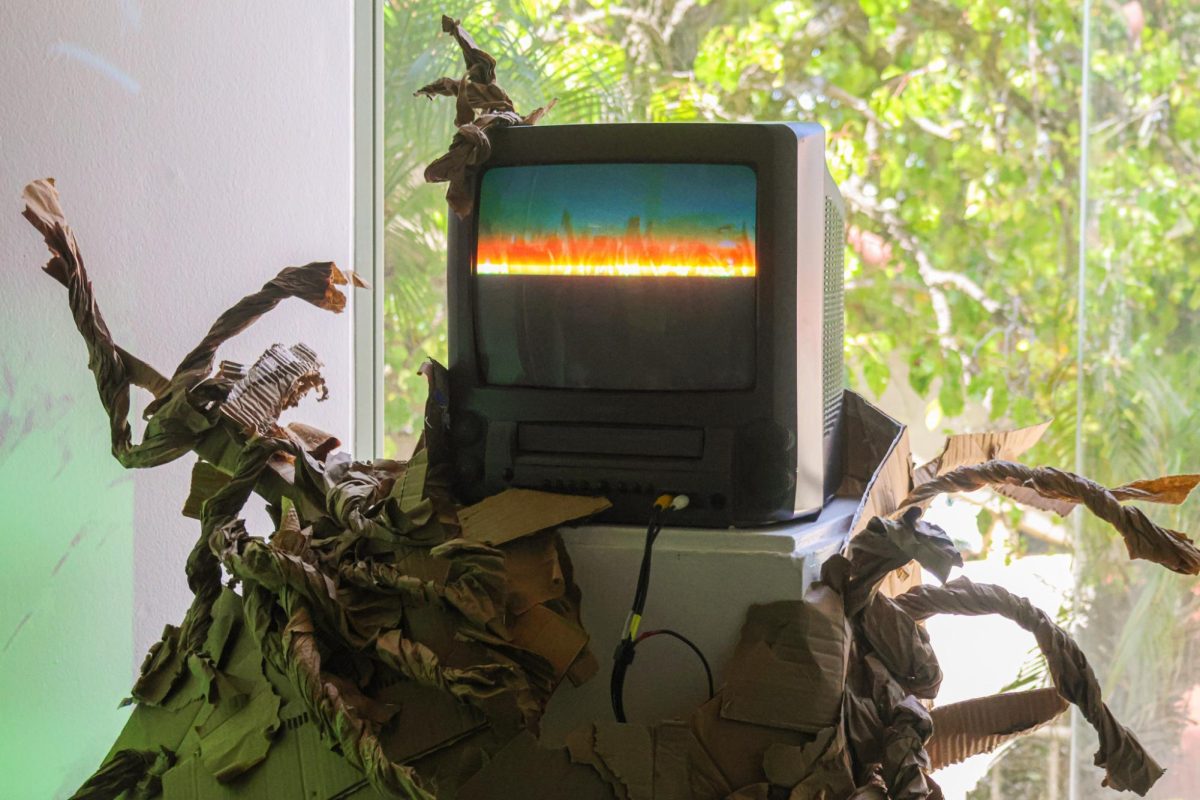By Carly Radist and Candace Ravan
As Rosie Statman â09 sorted through the clothes at a Santa Monica flea market, she came across a perfect shirt. It was comfortable and looked great on.
An added bonus that persuaded her to buy the shirt was that instead of the typical cotton threads, it was made with hemp, an eco-friendly material.
Big name brands and department stores such as Barneys CO-OP, Banana Republic and Phillip Lim have all begun to incorporate organic cotton and bamboo into their collections as alternatives to regular cotton in order to help protect the environment.
April, also known as Earth Month, is aimed at raising awareness of global warming and educating people about different ways to protect the environment. Simple tasks such as recycling and conserving electricity seem to appeal to students as effortless ways to help the environment, and now dozens of designers have created new outlets for people to become eco-friendly and environmentally safe.
Since 1996, the Sustainable Cotton Project has aimed to create awareness of an alternative method of saving the earth: growing organic cotton.
Through this program, farmers have learned new farming techniques and have developed methods of growing organic cotton which are chemically independent and have minimal impact on the environment, according to the SCP website.
When using inorganic fertilizers, some of the products can leak into streams and harm the water life ecosystems. Using organic fertilizers reduces this risk.
T-shirts made from 100 percent organic cotton use significantly less synthetic fertilizer and farm chemicals than T-shirts made from regular cotton, according to the SCP.
Certified organic cotton growers use cultural controls like crop rotation and find different ways to attract insect pests to other plants.
These new techniques of growing cotton adjust irrigation to discourage cotton vermin, AP Environmental Science teacher Wendy Van Norden said.
âOrganic farmers try to eliminate pesticides by using compost instead of inorganic fertilizers and by using integrated pest management,â Van Norden said.
 âIntegrated pest management uses biological controls including the introduction of insect predators and using Bacillus thuringiensi, vegetative insecticidal proteins.â
Studio City boutique greenROHINI carries all eco-friendly clothing and accessories made from organic cotton, bamboo, soy and seacell (derived from seaweed), as well as hemp, which is naturally pest resistant.
Store owner Lorin Becker tries to stay consistent with the eco-friendly nature of her store by buying goods manufactured in Southern California thus reducing the amount of pollution created by long distance shipping. However, organic and locally produced fabric tends to be more expensive than conventional fabric due to strict regulations, Becker said.
Nevertheless, Becker has noticed âthat there is a growing number of teenagers who are excited about buying eco-friendly clothing.â
Designers such as C & C California and ZOOEY and Love & Eight, which are popular among students, have incorporated organic cotton and/or bamboo into their fashion lines.
C&C Californiaâs eco-friendly tank tops and dresses use 100 percent organic cotton, and some students at Harvard-Westlake have begun to discover this eco-friendly trend. Molly Goodman â09 is a big fan of C&C tank tops and has started to buy the organic cotton line.
âI read in a magazine that C&C makes eco-friendly tank tops, so I thought it was an interesting way to help the environment,â Goodman said.
ZOOEY and Love & Eight uses 50 percent bamboo and 50 percent cotton in their sweatshirts and 100 percent organic cotton in their T-shirts.
Incorporating bamboo into their products is an efficient source of fabric as it is the fastest growing plant and one of the best sustainable resources, according to bambooclothes.com. ZOOEY and Love & Eight has promised to donate $2 of the profits of each T-shirt to the organization Healthy Child Healthy World.
âI feel like I am helping the environment by wearing organic cotton shirts,â Goodman said.
Marina Romano â09 said that her ZOOEY and Love & Eight t-shirt is âone of my favorite shirts and knowing that it is organically made makes me feel happier that I bought it.â
The T-shirts serve as walking advertisements for protecting the planet. Each of the T-shirts displays phrases ranging from âSave the Planetâ to âWE ARE GREENâ in bright colors.
Barneys New York now carries several fashion lines which are leading the way in environmentally conscious fashion.
Students who shop the racks of Barneys CO-OP department can find designer Rogan Gregoryâs line Loomstate, which uses organic cotton in all of their pieces.
High-end designer Phillip Lim has created a separate line called Go Green Go by Phillip Lim, which has incorporated the use of organic cotton. Theory has also created some clothing using organic cotton.Â
 âI would love to be more environmentally aware and I think a good first step is starting with clothing,â Statman said.




































